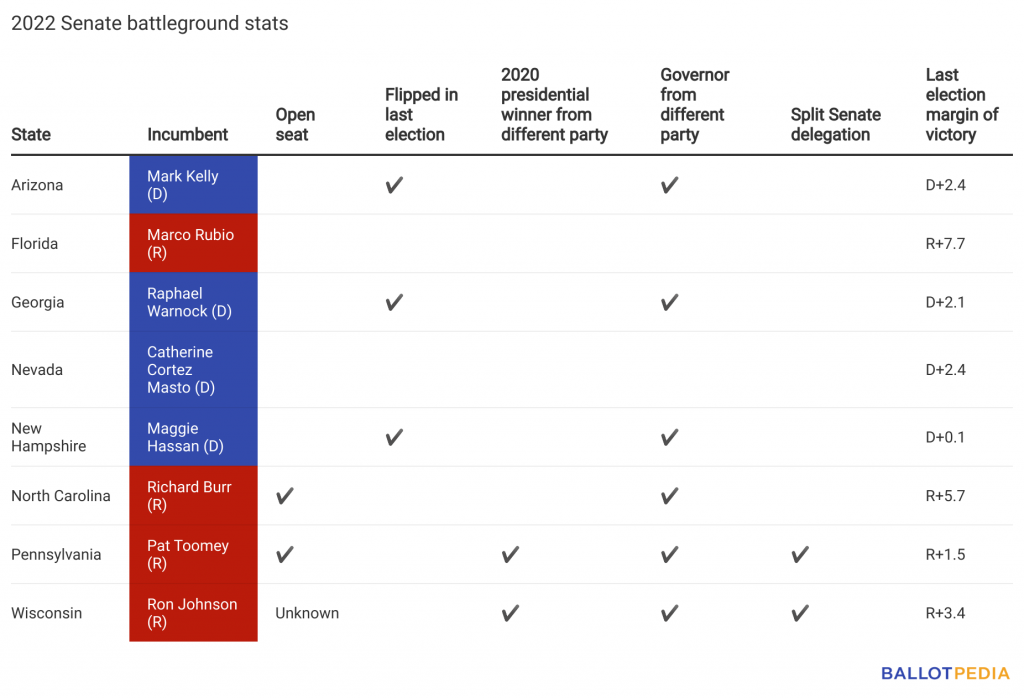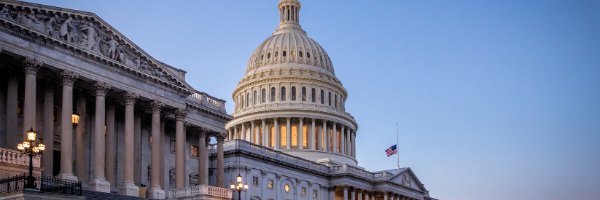Control of both chambers of Congress is at stake in the 2022 midterm elections. The Democratic and Republican caucuses currently split the Senate 50-50, with Vice President Kamala Harris (D) casting tie-breaking votes. Thirty-four Senate seats are up for election next year. Republicans currently hold 20 of those and Democrats, 14.
Senate races in eight states are rated Battlegrounds by Inside Elections and as Toss-ups, Lean, or Likely Democratic or Republican races by Cook Political Report and/or Sabato's Crystal Ball: Arizona, Florida, Georgia, Nevada, New Hampshire, North Carolina, Pennsylvania, and Wisconsin.
The table below shows information about each of these states that suggests competitive elections.

Pennsylvania and Wisconsin are the only two states where the Senate seat up for election is held by an incumbent of a different party than the state's 2020 presidential winner. Joe Biden (D) defeated Donald Trump (R) 50.0%-48.8% in Pennsylvania and 49.5%-48.8% in Wisconsin. Democrats aren't defending any seats in states Trump won last year.
Pennsylvania and Wisconsin are also the only two battleground states with one senator from each major party. Seats up for election from states with split delegations that are not currently considered battlegrounds are Ohio and Vermont (Sen. Bernie Sanders is an independent and caucuses with the Democratic Party, as does Vermont's other senator, Democrat Patrick Leahy).
North Carolina and Pennsylvania are the two battleground states with retiring incumbents. Other states with open seats next year include Ohio, Alabama, and Missouri. Senators in South Dakota, Vermont, and Wisconsin have not announced whether they will seek re-election.
Arizona's and Georgia's Senate seats changed party hands in special elections in 2020 and 2021, respectively. Democrats Mark Kelly in Arizona and Raphael Warnock in Georgia defeated Republican incumbents. In New Hampshire's 2016 election, Democrat Maggie Hassan defeated incumbent Kelly Ayotte (R).
Part of what suggests competitive races in Florida and Nevada are close 2018 Senate election results and close recent presidential election results in those states.


